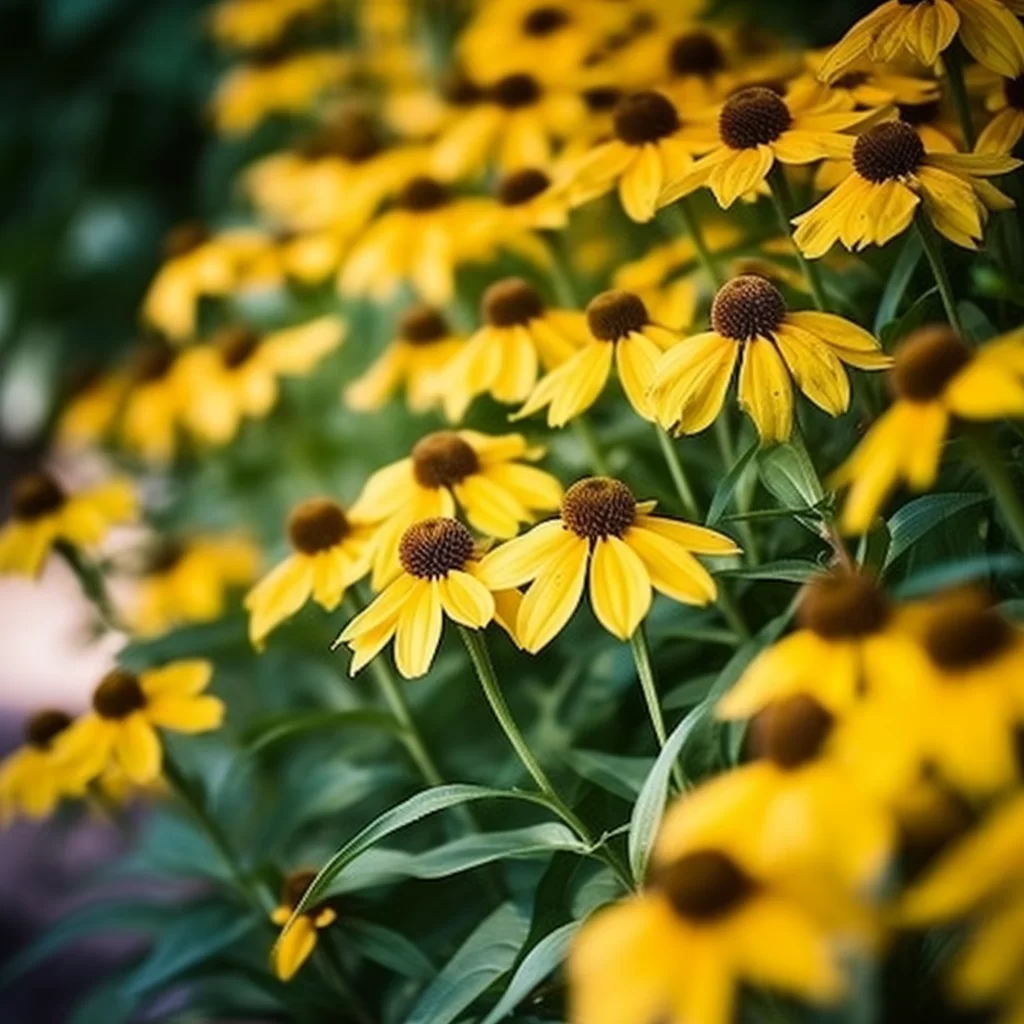Story of Day :
Contents
Rudbeckia Plant: Your Ultimate Guide to Care and Maintenance
Are you looking for a plant that adds a pop of color to your garden? Look no further than the Rudbeckia plant! Also known as coneflowers, these plants are a popular choice among gardeners due to their vibrant yellow and orange petals.
Not only do they look stunning, but they also attract pollinators like bees and butterflies.
What is Rudbeckia?
Rudbeckia is a perennial flower that originates from North America.
It belongs to the Asteraceae family and comes in various sizes ranging from dwarf varieties to taller ones that can reach six feet in height.
The most famous species of this plant are Rudbeckia hirta, Rudbeckia fulgida, and Rudbeckia triloba.
Care Tips for Your Rudbeckia Plant

- Sunlight: These plants thrive in full sunlight or partial shade.
Make sure you place them where they can receive at least six hours of direct sunlight per day.
- Soil: Ensure that the soil drains well as these plants do not tolerate soggy soil conditions.
They prefer fertile loamy soil with a pH range between 6-7.
- Watering: Once established, rudbeckias need little watering as they have deep roots systems that allow them to access moisture stored deep down in the soil during dry spells.
Water your rudbekias weekly during prolonged drought conditions but avoid overwatering which can lead to root rot disease.
- Fertilization: The best time for fertilizing your rudbekias is during early spring when new growth emerges after winter dormancy.
Use a balanced fertilizer with equal amounts of nitrogen, phosphorus, and potassium to promote healthy foliage growth and abundant blooms.
- Pruning: Prune your rudbekias regularly to maintain their shape.
Deadhead the faded flowers regularly as this will encourage the plant to produce new buds that will result in extended flowering periods.
- Pest and Disease Control: The Rudbeckia plant is generally pest-resistant but can be prone to fungal diseases like leaf spot or powdery mildew under humid conditions.
To control these diseases, avoid overhead watering or overcrowding the plants.
Also, remove any dead or infected leaves as soon as possible.
Varieties of Rudbeckia Plants
Rudbeckias come in an array of colors ranging from bright yellow and orange shades to deep reds and browns.
Here are some popular varieties:
- Rudbeckia Hirta: This variety has a classic daisy-like appearance with bright golden petals surrounding a dark brown center cone.
- Rudbeckia Fulgida Goldsturm: This variety is known for its stunning yellow-gold petals that bloom from mid-summer through fall.
- Rudbeckia Maxima: With its tall stature reaching up to 8 feet tall, this variety boasts large cones surrounded by drooping yellow petals that sometimes feature black tips.

The Benefits of Growing Rudbekias in Your Garden
In addition to their eye-catching beauty and ability to attract pollinators like bees and butterflies, growing rudbekias also comes with other benefits such as:
- No fuss plants: Rudbekias are easy to grow and care for, making them an excellent choice for beginner gardeners.
- Drought-tolerant: Once established, rudbekias can tolerate drought conditions with minimal watering.
- Cut flowers: Rudbekia flowers make great cut flowers for arrangements as they have a long vase life.
In Conclusion

The Rudbeckia plant is a beautiful and easy-to-grow perennial flower that will add color and interest to your garden.
Whether you’re a seasoned gardener or just starting, the tips discussed above will help ensure your plant thrives year after year.
With its bright yellow or orange blooms that attract pollinators and its pest-resistant nature, you can’t go wrong with adding this stunning addition to your garden!